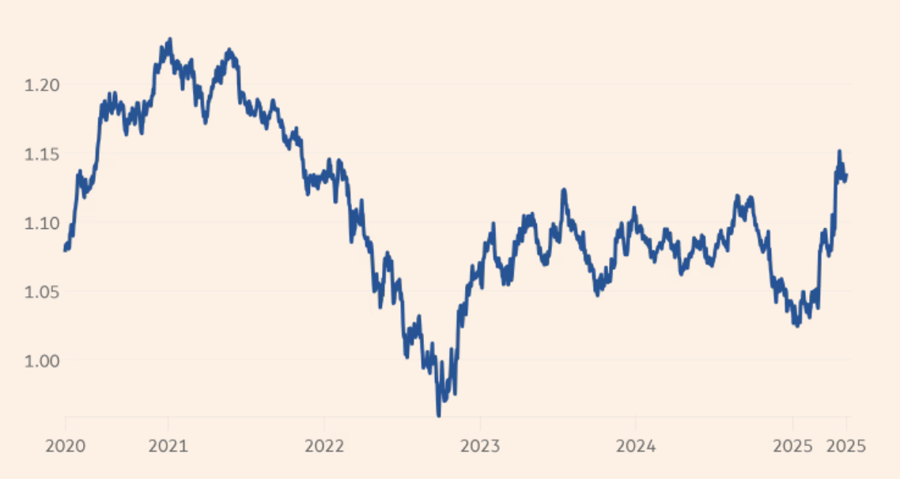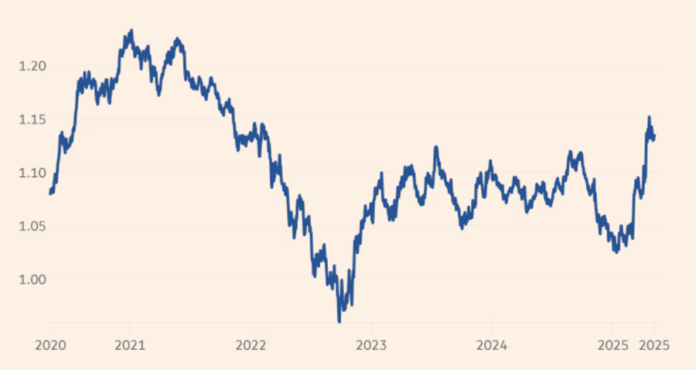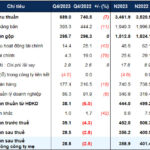European businesses are voicing concerns about the rising value of the euro. The single currency’s strong appreciation against the US dollar this year has posed a new risk for exporters in the region, who are already grappling with tariffs imposed by US President Donald Trump.
According to the Financial Times newspaper, software giant SAP, carmaker Porsche, brewer Heineken, and industrial conglomerate Schneider Electric are among the companies that have warned of potential damage after the euro appreciated by more than 9% against the dollar since the beginning of the year, reaching a three-year high. As of May 8, the euro-dollar exchange rate in the European market was hovering around 1.13 dollars per euro.
With the euro’s surge, this year could mark its strongest performance since 2017. One consequence for exporters in the eurozone is that the strong currency undermines the competitiveness of their goods sold in the US. Meanwhile, consumer demand in the US has shown signs of weakening due to the uncertainty caused by the tariff war initiated by Trump.
European Union (EU) member states have been subjected to Trump’s retaliatory tariffs of 20%, but these have been reduced to 10% for 90 days, similar to other affected countries and economies.
“The strong euro exacerbates the tariff shock,” said Robin Winkler, Deutsche Bank’s chief economist for Germany.
Last week, HSBC slashed its forecast for profit growth this year for companies listed on the FTSE Europe index to 2.9%, warning that the strong euro could “significantly impact” the overseas profits of index members.
While many companies use currency hedging contracts to protect themselves from fluctuations in exchange rates, several have warned that the euro’s prolonged rise will squeeze their revenues and profits. Not only does it reduce the competitiveness of exports from the eurozone, but the appreciation of the euro also diminishes the profits and revenues of these companies when repatriated.

SAP’s chief financial officer, Dominik Asam, stated that for every 0.01-dollar increase in the euro-dollar exchange rate, the company stands to lose 30 million euros in annual revenue. He added that while SAP has significant hedging in place for this year, “2026 will be more difficult” as these hedging contracts expire.
Heineken noted that the euro’s strength against multiple currencies, including the Mexican peso, could result in a 180 million-dollar decline in its full-year net profit.
Schneider Electric’s chief financial officer, Hilarry Maxon, cautioned that a weak dollar, coupled with other currency effects, could cost the company up to 1.25 billion euros in annual revenue.
Porsche has attempted to mitigate the impact of the euro’s rise but will undoubtedly face some headwinds, according to its chief financial officer, Jochen Breckner. North America is the second-largest market for the carmaker.
HelloFresh, a German meal-kit company, shared that they based their business forecast for this year on an exchange rate of 1.04 dollars per euro. A rate of 1.14 dollars per euro could result in a 28 million euro hit to their annual profit.
The euro’s sharp rise since the beginning of the year reverses the trend from late last year when the dollar surged amid expectations that Trump’s agenda would boost US economic growth while only harming America’s trading partners. In reality, there are now multiple indications that the US will be among the economies suffering the most from the trade war, putting downward pressure on the dollar.
Additionally, according to Bank of America currency strategist Athanasios Vamvakidis, the euro is also supported by Germany’s 1 trillion-dollar economic stimulus plan.
In late April, the euro reached a high of 1.157 dollars, its strongest level in over three years.
Several major banks predict that the euro will continue to strengthen against the dollar. “The market has been too optimistic about the US and too pessimistic about Europe,” said Vamvakidis, forecasting that the euro will reach 1.17 dollars by the end of this year.
The Truth Behind TLG Stock’s 6 Consecutive Decreasing Sessions
After a continuous decrease in stock prices for 6 consecutive sessions, the stock price of Thien Long Group Corporation (HOSE: TLG) continued to decline on February 2nd. This was followed by the company recording the lowest profit in the past two years in the fourth quarter of 2023 (excluding the loss in the fourth quarter of 2022 due to exceptional marketing expenses).

















